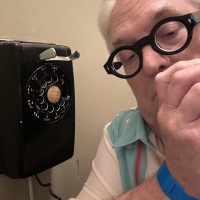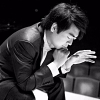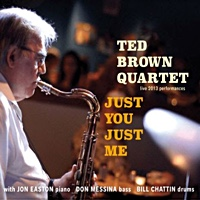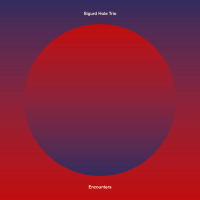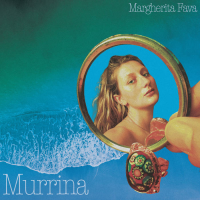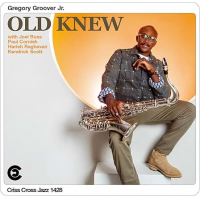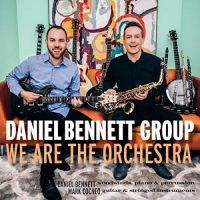Home » Jazz Articles » Bailey's Bundles » Lang Lang - Bach: Goldberg Variations
Lang Lang - Bach: Goldberg Variations
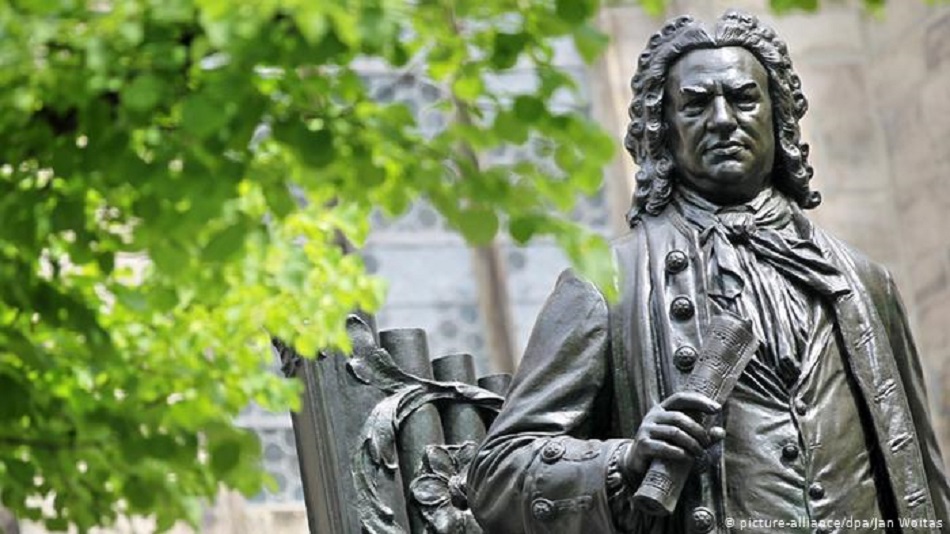
Live at the Proms (Telarc, 2002); Live at Carnegie Hall (Deutsche Grammophon, 2004); Live in Vienna (Sony Classical, 2010); and At The Royal Albert Hall (Sony Classical, 2020) are his notable live recordings and they all are uniformly fine. His studio works boast only Chopin: The Piano Concertos (Deutsche Grammophon, 2008), as a complete assay, an easy enough accomplishment as there are two. He has managed two of the four Rachmaninov concertos (Concerto No. 3 (Telarc, 2002); Concerto No. 2, Paganini Rhapsody (Deutsche Grammophon, 2005)) and the First and the Fourth Beethoven Piano Concertos (Concertos 1 & 4 (Deutsche Grammophon, 2007).
Lang Lang's thematic recordings have their appeal, His 2019 Piano Book (Deutsche Grammophon) is a resounding success as one of the best conceived recitals of the modern piano repertoire. It demonstrates the pianist's genius for marketing his considerable skills to as wide an audience as possible. That said, Piano Book is enjoyable from beginning to end. Isn't that what this is all about anyway? A superb sampler that will guide any listener to a deeper, expansive, and more profound loam of music. But, to be sure, Lang Lang is a practitioner of the large Romantic repertoire. His Schumann and Tchaikovsky are outstanding. He is completely tuned into the artist-as-hero motif personified by Franz Liszt and Nicolo Paganini. Well done, in that respect as it has been the norm since. In the world of classical music, musicians rarely see the promotional push given to Lang Lang. And if classical music has a "Rock Star" it is indeed this man.
Lang Lang, and Deutsche Grammophon, obviously wanted this release of The Goldberg Variations to be something different, something bigger, an event. Promotional advertisements were carefully placed in all of the usual locations months in advance. The performance(s) are released in multiple formats: a two-disc studio set; and LP set and an elaborate four-disc set coupling a live performance of the recital at Leipzig's St. Thomas Church. Lang Lang does nothing in a small way and all of his projects are well thought-out and executed. His Goldberg Variations are no exception.
What of The Goldberg Variations? Beginning with Ruldolph Serkin's 1920s piano roll, the piece has been recorded scores of times. It is a repertoire challenge like that of the Beethoven Symphony cycle: evidence, once conquered, of having fully arrived as a performer and artist. The compositions' background is an interesting one and its temporal and musical structures beyond genius. It is a monument of human spirit and thought.
The Goldberg Variations
In music, variation is a formal technique where material is repeated in an altered form. The changes may involve melody, rhythm, harmony, counterpoint, timbre, orchestration or any combination of these. Variation is the heart of jazz, where variations are invented on the spot, improvised as opposed to being composed ahead of time. In the case of Bach's composition, each of his variations were constructed and written down in a specific and deliberate fashion. The The Goldberg Variations had a likewise specific and deliberate place in the composer's oeuvre.The namesake for these variations is one Johann Gottlieb Goldberg, who may also have debuted the work. How the composition made its way to Goldberg is a circuitous and apocryphal one. According to legend, a former Russian ambassador to the electoral court of Saxony, Count Kaiserling, who often visited Leipzig, brought with him the keyboard student Goldberg, in order to secure for him musical instruction by Bach. The Count was also an insomniac. When experiencing a sleepless night, he would often have Goldberg, who lived in his house, play keyboard music to assuage his sleeplessness.
Aware of Bach's close proximity, the Count requested that the composer prepare some clavier pieces for Goldberg, which should be, ..."of such a smooth and somewhat lively character that he might be a little cheered up by them in his sleepless nights." Bach figured that a set of variations would meet the requirements of the Count. Up until this point, Bach considered composing variations to be a bore because of the repeated harmonic architecture maintained from one variation to the next. These pieces prove to be the only variations on a theme Bach was to compose and as such they possess great artistic value in his catalog.
Bach was no stranger to composing "keyboard exercises" ("Clavier Übung") for students, of which The Goldberg Variations may be considered. Bach assigned the term "Clavier Übung" to several of his compositions and they have come to be considered and grouped formally as such:
Clavier Übung I: for harpsichord, contains six partitas, BWV 825—830, which were published separately from 1726 to 1730, and then grouped into one publication in 1731.
Clavier Übung II: for harpsichord with two manuals, contains the Italian Concerto, BWV 971 and the Overture in the French Style, BWV 831, and was published in 1735.
Clavier Übung III: German Organ Mass included: Prelude and fugue BWV 552, Chorale preludes BWV 669—689, Four duets BWV 802—805 and was published collectively in 1739 .
Clavier Übung IV: The Goldberg Variations for harpsichord with two manuals, published 1741. However, Bach never specifically designated them as the fourth in his series of exercises, allowing history to do so for him.
The composition consists of 32 discrete parts: an opening aria followed by 30 variations and completed with a coda performance of the opening aria. The variations do not follow the melody of the aria, but rather use its bass line (or, as in jazz, the harmonic underpinning) of the aria. Every third variation of the 30 is a canon (think, "Row, Row, Row Your Boat") composed in an ascending pattern. Variation 3 is a canon at the unison, variation 6 is a canon at the second (the second entry begins the interval of a second above the first), variation 9 is a canon at the third, and so on until variation 27, which is a canon at the ninth.
The final variation, instead of being the expected canon in the tenth, is a quodlibet, a kind of musical joke based on several German folk songs, two of which are identified as "I have so long been away from you, come closer, come closer" and "Cabbage and turnips have driven me away, had my mother cooked meat, I'd have opted to stay." The other folk songs Bach riffed on were not identified. Ain't that a kick in the head? A restatement of the aria closes the composition.
The number of Goldberg Variations recordings is many. The number of very good Goldberg Variations is considerable. Lang Lang has chosen the piece for his serious, deep-reading repertoire break out. Liszt and Rachmaniov have the flash and are grand examples of Lang Lang's pianism. Can he concentrate sufficiently to produce a provocative reading of these variations? Lang Lang has proven himself competent in Haydn, Clementi, and Mozart, albeit all with a Romantic zeal not unlike that of Vladimir Horowitz. What about his Bach?
 Lang Lang
Lang Lang Bach: Goldberg Variations
Deutsche Grammophon
2020
The promotional stuff first. Lang Lang's Goldberg Variations recording is released in a deluxe edition that collects two performances spread with profligate zeal across four discs in a handsomely appointed cardboard bookcase. The edition includes one performance in the studio and one performed and recorded live to a receptive audience in Leipzig's Thomaskirche, where Bach served as kapellmeister and where the composer's tomb is located. No one can fault Lang Lang for plumbing that symbolism at depth.
What Lang Lang's Bach is....is Lang Lang's. The pianist prefers slower tempos like Barenboim, but with more whimsy and laughter. He would mimic Kempff had that pianist not taken himself so seriously. Lang Lang takes a musical approach, coaxing the melody from the dry counterpoint of Bach's keyboard theology. His studio performance is studied, but studied through his 21st Century lens of mass culture and popularity. He puts a governor on his playing, but his personality is so strong and Romantic, that like Horowitz, he cannot help himself.
Lang Lang's Aria sports all of the repeats, clocking in at over five minutes. He does not miss a note while infusing the performance with as much Romantic shading as he dares. Listen to the pianist's left hand. He summons the bass progression, but at his own beckoning. Throughout, the low register will wind in and out of the performance: sometimes given center stage, sometimes buried beneath the flourish of the right, never where the learned listener will expect.
Lang Lang's First Variation is approached pensively, sans any of the ferocity of a dozen recorded performances since Glenn Gould's 1956 recording where he carpet bombs the listener into a submission with dramatically pointed playing. Lang Lang wants to remind us of the beauty and thoughtfulness of Bach. This approach works throughout the performance, where the pianist oscillates between chaste adherence to the score and his own imagination and untethered musicality.
The 38-year old pianist (at the time of this recording) makes it a point to state that he has studied this score for 20 years. Indeed, he performed the Variations in his late teens, from memory, for the Austrian conductor Nikolas Harononcout who told him, as Sam Phillips told Johnny Cash, after he sang the producer some chaste gospel pieces, to, "Go out and sin and then come back and sell me some music." Lang Lang took this advice, mostly. The pianist's attention to the bass line is mostly authentic. He likes punctuated bass noted and likes to accentuate them.
Lang Lang's evolution through the variations is one of increasing confidence and determination: determination that often gets away from him in the later variations like the sixth canon. It remains very enjoyable and only the most fussy professionals would complain. Lang Lang is the confident professional to the end and his performance is impeccable if not full of himself. The quodlibet is the most Romantic of the variations and best suited to the pianist. His closing coda is almost heartbreaking. Lang Lang knows he is at the end of a journey, artificial as it may be in the studio. It is a bit like the Roman Catholic confessional in its stark and contrived beauty.
But this pianist is not occupied by such spiritual conflicts. Lang Lang's live performance (one take) in Leipzig's St. Thomas Church is full of joy and abandon that would have been frowned on by Bach and his spiritual antecedent, Martin Luther. The immediacy of a live recording, especially one so promoted and anticipated, is more than intimate. The listener will not doubt the pianist's dedication to the composer, only his commitment. Lang Lang remains a DG media fixture looking for serious validation. He needn't do this. He could simply move forward having wowed a great part of the classical music audience.
Lang Lang's live performance is lyricaly playful while being reverent. He is as serious about his Bach as his Romantic inclinations allow him to be. Is this the best Goldberg Variations? No. It is a personal vision of an accomplished musician wanting to be taken more seriously than is over promotion allows. This is a beautiful and personal performance of a beautiful and personal composition. If you want to know what Lang Lang is thinking...listen to this.
CD1 (Studio): Aria; Variation 1 A 1 Clav.; Variation 2 A 1 Clav.; Variation 3 A 1 Clav. Canone all'Unisono; Variation 4 A 1 Clav.; Variation 5 A ô vero 2 Clav.; Variation 6 A 1 Clav. Canone alla Seconda; Variation 7 A 1 ô vero 2 Clav. al tempo di Giga; Variation 8 A 2 Clav.; Variation 9 A 1 Clav. Canone alla Terza; Variation 10 A 1 Clav. Fughetta; Variation 11 A 2 Clav.; Variation 12 A 1 Clav. Canone alla Quarta in moto contrario; Variation 13 A 2 Clav.; Variation 14 A 2 Clav.; Variation 15 A 1 Clav. Canone alla Quinta: andante.
CD2 (Studio): Variation 16 A 1 Clav. Ouverture; Variation 17 A 2 Clav.; Variation 18 A 1 Clav. Canone alla Sesta; Variation 19 A 1 Clav.; Variation 20 A 2 Clav.; Variation 21 A 1 Clav. Canone alla Settima; Variation 22 A 1 Clav. alla breve; Variation 23 A 2 Clav.; Variation 24 A 1 Clav. Canone all'Ottava; Variation 25 A 2 Clav. Adagio; Variation 26 A 2 Clav.; Variation 27 A 1 Clav. Canone alla Nona; Variation 28 A 2 Clav.; Variation 29 A 1 Clav. ô vero; Variation 30 A 1 Clav. Quodlibet; Aria da capo.
CD1 (Live): Aria; Variation 1 A 1 Clav.; Variation 2 A 1 Clav.; Variation 3 A 1 Clav. Canone all'Unisono; Variation 4 A 1 Clav.; Variation 5 A ô vero 2 Clav.; Variation 6 A 1 Clav. Canone alla Seconda; Variation 7 A 1 ô vero 2 Clav. al tempo di Giga; Variation 8 A 2 Clav.; Variation 9 A 1 Clav. Canone alla Terza; Variation 10 A 1 Clav. Fughetta; Variation 11 A 2 Clav.; Variation 12 A 1 Clav. Canone alla Quarta in moto contrario; Variation 13 A 2 Clav.; Variation 14 A 2 Clav.; Variation 15 A 1 Clav. Canone alla Quinta: andante.
CD2 (Live): Variation 16 A 1 Clav. Ouverture; Variation 17 A 2 Clav.; Variation 18 A 1 Clav. Canone alla Sesta; Variation 19 A 1 Clav.; Variation 20 A 2 Clav.; Variation 21 A 1 Clav. Canone alla Settima; Variation 22 A 1 Clav. alla breve; Variation 23 A 2 Clav.; Variation 24 A 1 Clav. Canone all'Ottava; Variation 25 A 2 Clav. Adagio; Variation 26 A 2 Clav.; Variation 27 A 1 Clav. Canone alla Nona; Variation 28 A 2 Clav.; Variation 29 A 1 Clav. ô vero; Variation 30 A 1 Clav. Quodlibet; Aria da capo.
Recordings for comparison:
Wanda Landowska -Bach: Goldberg Variations; Italian Concerto; Chromatic Fantasy & Fugue (HMV, 1933)— Harpsichord. Spooky and strange, like listening to Robert Johnson in situ circa 1937. Landowska on Gould: "He can play Bach his way, I'll play it Bach's way." A complete myth, but so great anyway!Ralph Kirkpatrick -Bach: Goldberg Variations; Italian Concerto (Deutsche Grammophon, 1958) Harpsichord. Modern performance. What I imagine Bach sounded like in the same way that Thomas Cahill imagined the evangelist Luke's Christ in Desire of the Everlasting Hills: The World Before and After Jesus (NanA.Talese/Doubleday, 1999. This is what taste and charm sound like.
Glenn Gould—Bach: The Goldberg Variations (Columbia Masterworks, 1956) Piano. Popularized the Variations for mass media in a completely iconoclastic way with no apologies while seated at his silly dining room-chair.
Glenn Gould -Bach: The Goldberg Variations (Columbia Masterworks, 1982) Piano. Thirty years later. Gould is more introspective. He knows he is not the Horowitz of Bach, humming his way through an exemplary performance failing to eclipse his original recordings.
Daniel Barenboim -Goldberg Variationen (Erato, 1991) -My initiation to the Variations. I am still stunned by Barenboim's authoritative attack in the transition from Variation 3 to Variation 4. This is not the best Bach, but it was what I began on and like Solti's Beethoven Cycle, will remain what I measure all performances by.
András Schiff -Bach: Goldberg Variations (Decca, 1986) Piano. A conversation with a new friend.
András Schiff -Bach: Goldberg Variations (ECM, 2003) Piano. A conversation with an old friend, 30 years later.
Murray Perahia— Bach: Goldberg Variations (Sony, 2000) Piano. The most refined and realized Bach for the piano. All of it: English Suites, French Suites, Partitas, Concertos. Perahia's Bach will make the listener swear, it is so fine.
Alexandre Tharaud -Bach: Goldberg Variations (Erato, 2016) Piano. The most lyrical and confidently playful Variations by a Baroque piano master. The most even and consistent playing with almost perfect tempo control.
Ekaterina Dershavina -Johann Sebastian Bach: Goldberg Variations (Arte Nova Classics, 1996) Piano. Possibly the best performance (in comparison to Perahia's near supernatural one) Clinically astringent Bach. Punctilious with no elaboration or pretense. Bach would have approved of this performance before all. This is the one from which to learn.
Wilhelm Kempff -Johann Sebastian Bach: Goldberg-Variationen (Deutsche Grammophon, 1994) Piano. Wilhelm Kempff was a force unto himself. You will never hear a more jolting Aria. Kempff plays it like a bluegrass ballad.
Tags
PREVIOUS / NEXT
Support All About Jazz
 All About Jazz has been a pillar of jazz since 1995, championing it as an art form and, more importantly, supporting the musicians who make it. Our enduring commitment has made "AAJ" one of the most culturally important websites of its kind, read by hundreds of thousands of fans, musicians and industry figures every month.
All About Jazz has been a pillar of jazz since 1995, championing it as an art form and, more importantly, supporting the musicians who make it. Our enduring commitment has made "AAJ" one of the most culturally important websites of its kind, read by hundreds of thousands of fans, musicians and industry figures every month.

